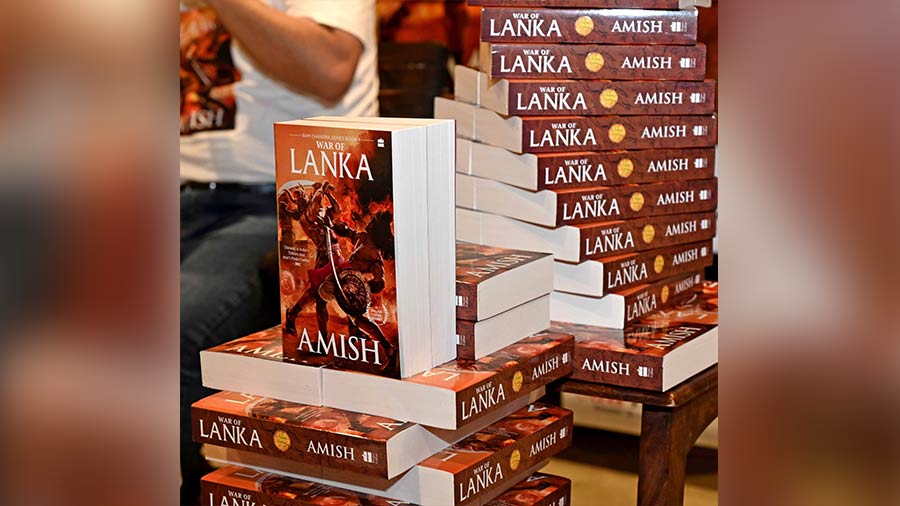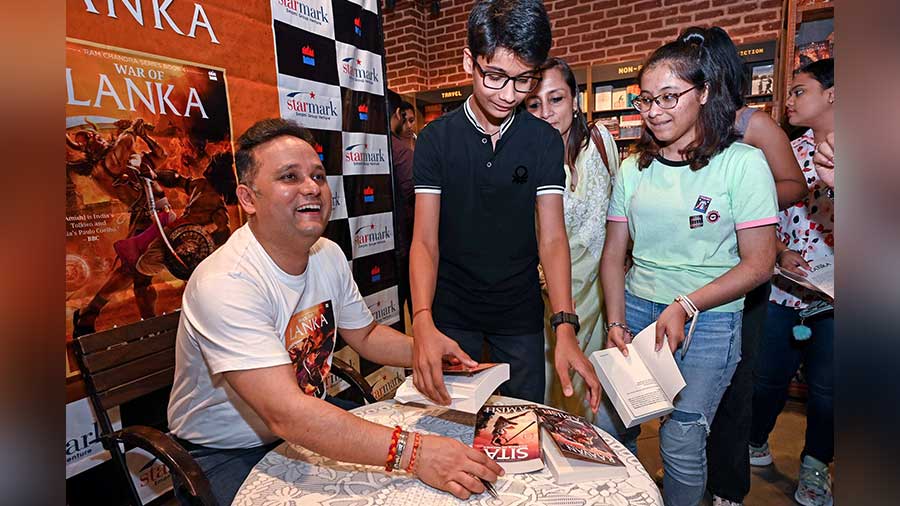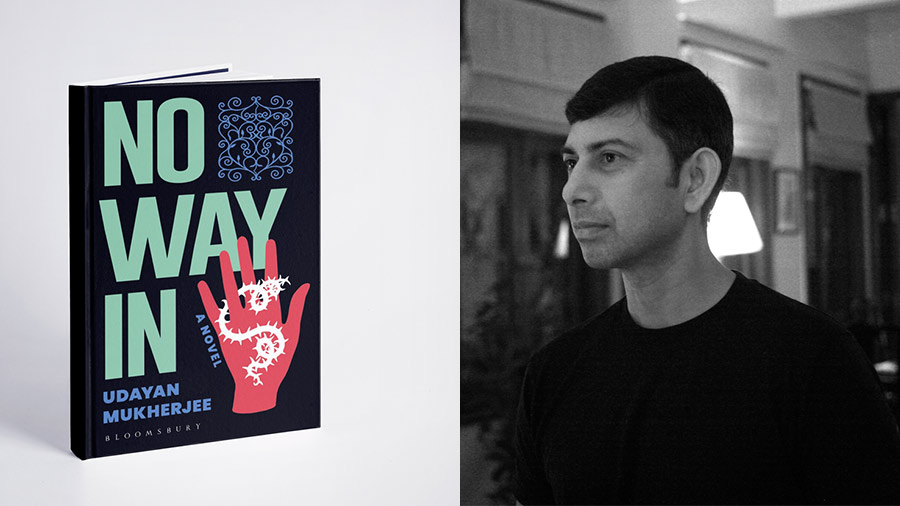Shiva to Ram Chandra, author Amish’s popularity has been soaring unbridled like Shiva’s mane and hitting the bullseye (read reader’s hearts) like Ram’s perfect aim with his arrow.
In Kolkata as part of an all-India tour to promote his latest book in the Ram Chandra series War of Lanka, Amish dropped in at Starmark, South City Mall, on October 21. Fans from eight to 80 thronged the bookstore for the interaction and book-signing.
My Kolkata caught up with the author on the sidelines of the event. Here are some excerpts from the chat where Amish shared fond memories of studying at the Indian Institute of Management, Calcutta.

My Kolkata: Tell us a little about the War of Lanka.
Amish: War of Lanka is the fourth book of the Ram Chandra series. The first three books have been written in a multi-linear narrative. The first book, Ram Scion of Ishvaku, begins with the birth of Lord Ram and ends with the kidnapping of goddess Sita. Sita: Warrior of Mithila spans her life from birth to her kidnapping and Raavan: enemy of Aryavarta tracks events from his birth to the time he kidnaps goddess Sita. The fourth book onwards, there is a common narrative from the kidnapping of goddess Sita to the death of Raavan and the return of the royal couple to Ayodhya. That’s where the traditional Ramayan normally ends for urban Indians.
Since it’s the prequel of the much-loved Shiva Trilogy, was it challenging to join the dots backwards?
I am fortunate to be an instinctive writer. I don’t plan my books. They just come to me. If I write instinctively, then there is nothing that one has to plan, it just comes naturally. That’s how I wrote this. If I write from that perspective, then it is actually one of the easiest things to write.
What made you look at Sita as a warrior? Does she stand as a voice of women’s empowerment and feminism for modern times?
Sita: Warrior of Mithila may stand as a voice for women’s empowerment in the modern day. But with roots that go back to ancient India, it’s not something I have created. It’s inspired by a version of the Ramayan called the Adbhut Ramayan, also credited to Valmikiji, in which Sita is a warrior and she is the one who kills the more powerful Raavan. It may speak to the modern-day readers but the roots are deeply traditional.
After Raavan in 2019, you came out with Suheldev and Dharma, both very different books from this series. Why did you decide to go back to the Ram Chandra series?
That was part of the plan. I had ended Raavan: Enemy of Aryavarta with a ‘to be continued’. I know this has taken a little longer than expected. Suheldev and Dharma were books from the Writers Centre in partnership with other writers. But Shiva Trilogy and Ram Chandra Series are books that only I have written. Yes, War of Lanka has come a little late, my apologies for that. I have been scolded a lot by the readers for that [laughs]. But fortunately, they seem to have loved it. War of Lanka is selling even faster than Raavan did. So, thank you to all my readers for their love.

All four books of the series showcase individual character growths and the merging of their personalities and actions. But the end is yet to come. What can we expect from the concluding book in the series?
As you guessed rightly, the Ram Chandra series is actually one way of looking at it. It’s a 1,500-year-old prequel to the events of the Shiva Trilogy. Like I said War of Lanka ends like a traditional Ramayan ends for most modern Indians. So, it will give you a sense of conclusion. But there is one book that is yet to come, which I will release perhaps many years later and that book will connect the Ram Chandra series to the Shiva Trilogy and that book will be titled Rise of Meluha, the fifth book of the Ram Chandra series; that’s where the entire long Shiva Trilogy and Ram Chandra series will end, all tied together.
Is there a possibility of a Mahabharat series too? If yes, then which character can we see you focussing on?
Yes, that was also in the plan. I don’t know when I will take it up but I do have an interpretation of the Mahabharat that I would like to share
What next?
After War of Lanka, I have a few more Writer’s Centre books coming up. One on the beauty of idol worshipping, one on Rajendra Chola, one on Abbakka Rani. I am working on all of them. But I have a new series in mind, which is a very different genre. It’s set in the modern day with elements of time travel and gaming. Very different… and I’m excited about it. I might take that up.
A literary rapid fire with Amish
One book that remains your all-time comfort read
I primarily read non-fiction
One author who has influenced you
If you have been influenced by one author, you haven’t read enough, read more!
The book you are currently reading
The Avoidable War by Kevin Rudd
Do you prefer reading and writing offline or on devices?
Both actually. I read physical books. I read Kindle books because at times it’s easier to get international books on Kindle. I listen to audio books as well because that makes my jogging or cycling time productive as well.
When not writing what does Amish like to do?
I have a diplomatic job, I do that. I host documentaries, working on the production of my movies as well. Travelling, spending time with my family. My days are packed.
Your favourite mythological character and why
That’s a very easy answer — Lord Shiva. For me he’s not a mythological character. He’s my God.
One thing about Kolkata that keeps bringing you back to the city
I spent the best years of my life here. I studied in IIM Calcutta. I did my MBA out here. I love coming back and spending time here. I love eating mishti doi. I have very fond memories. I don’t go to too many lit fests but I usually come to the ones in Kolkata, whenever possible.


